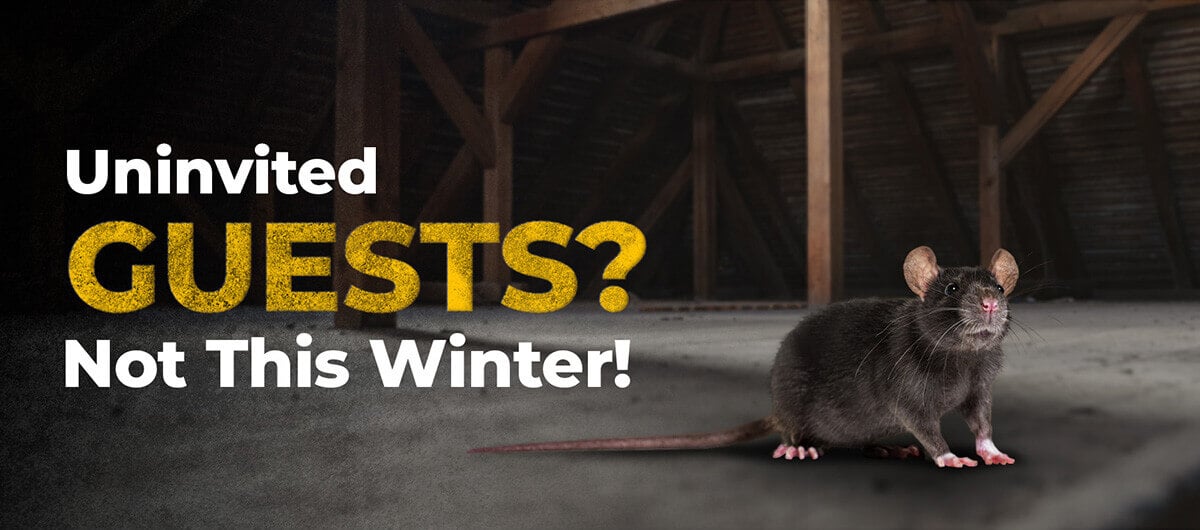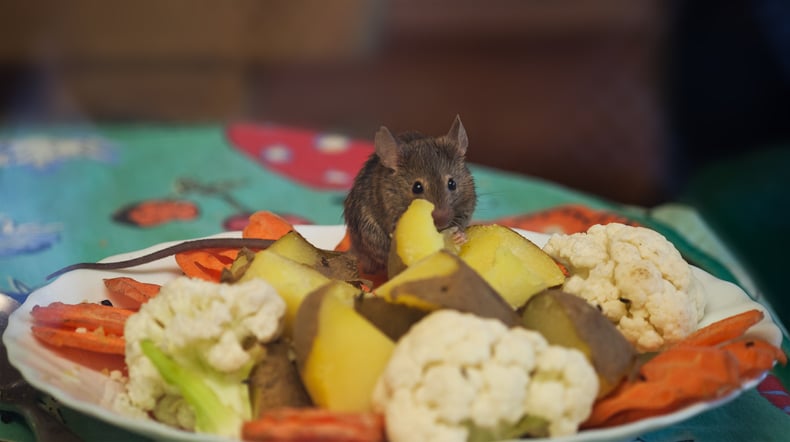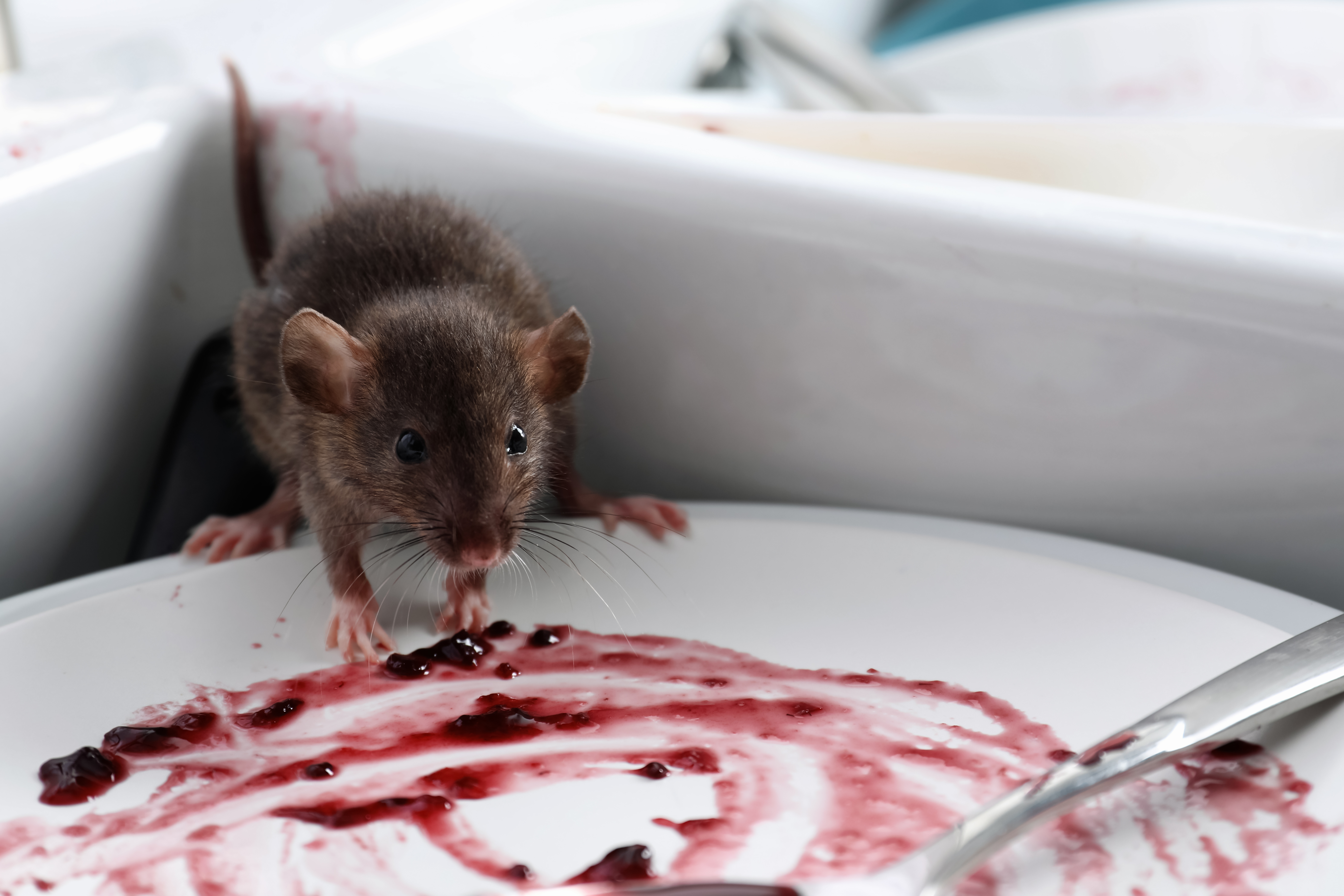It always starts the same way: scratching in the walls at night, a faint rustling overhead, maybe the dog barking at the ceiling for no apparent reason. You tell yourself it’s just the house settling. But deep down, you know better. If you live in Simi Valley, Sherman Oaks, Santa Clarita, Oxnard, or Woodland Hills, rats aren’t just a possibility, they’re practically neighbors... And winter to spring? That’s breeding season. Norway rats and roof rats are out there, looking for food, warmth and places to nest. Unfortunately, your home checks all three boxes.
Why Are Rats So Attracted to Homes in These Areas?
It’s not just bad luck. Homes in these suburban parts of Southern California provide the perfect rat habitat:
- Mild winters with no snow, which means rats can breed nearly year-round.
- Pet food, compost bins, trash cans and fruit trees provide abundant food and easy pickings.
- Roof rats, especially, love the Spanish tile roofs and attic crawlspaces so common in our areas.
For HOA property managers, it’s worse. One unit gets rats, and the next few aren't far behind. And guess who gets the angry phone calls?
What Happens During Rat Breeding Season?
This is where it gets nasty. Female rats reach sexual maturity in just five weeks. They can have 6–12 pups per litter… and up to 7 litters a year. Do the math. That’s hundreds of rats in your walls, your attic, your neighbor’s vents before you’ve even spotted the first one.
And they’re not just loud roommates. They chew electrical wires, destroy insulation, gnaw through water pipes and contaminate everything with urine and feces. They can cause electrical fires, flooding, and even structural damage to walls, subfloors, and ceilings.
And the Health Risks?
- Hantavirus spreads through droppings and urine and can become airborne when cleaning.
- Salmonella is found in contaminated food or surfaces.
- Leptospirosis is transmitted through water or soil tainted with rat urine.
How to Know They’ve Moved In
Think you’re safe? Here's what to look for:
- Scratching or squeaking sounds at night
- Droppings (look for shiny black pellets the size of a raisin)
- Gnawed food packages or cardboard
- Grease marks along baseboards or beams
- Nests made of shredded paper or insulation
- Odd pet behavior—dogs and cats can sense them before you can
If you manage a property and residents start complaining of weird smells, odd noises or power outages, then it’s time to investigate.
Why DIY Doesn’t Cut It
Sure, you can buy a trap or two. Sprinkle peppermint oil. Maybe seal a hole. But rats are smarter than you think. Roof rats, in particular, can avoid traps for weeks. And if you kill one, five more are nesting nearby. Most DIY solutions only scratch the surface. They don’t touch:
- Hidden nests deep in insulation or under foundations
- Entry points you can’t see from ground level
- Rats living behind walls or in HVAC systems
- Rapid breeding cycles and re-infestation
Worse? DIY poisons can be dangerous to pets and kids, especially in multifamily properties.
So What’s the Real Solution?
Call AIPM. (Really.) We’ve been protecting homes and communities in Southern California for decades, and we don’t just “treat” rats, we eliminate the problem at its source. That means:
- Comprehensive inspection of the property (attics, crawlspaces, garages—you name it)
- Species identification (Norway rat vs. roof rat)
- Sealing ALL entry points, even the ones on the second story
- Targeted baiting and trapping with professional equipment
- Safe placement of traps and materials—nothing harmful to pets or residents
- Ongoing monitoring and prevention
For HOAs and Property Managers, This Is a No-Brainer
Professional pest control is not just smarter, it protects your property, your tenants and your time because rats:
- Mean code violations if waste or droppings are found.
- Cause community-wide complaints, especially when seen during the day.
- Create shared liability, which means that, when one unit gets rats, all units pay the price.
Professional pest control is not just smarter, it protects your property, your tenants and your time.
Conclusion: Don’t Let Rats Raise a Family in Your Home
The real cost of waiting comes in every week you delay because they breed, they chew, they contaminate and they make your home (or community) less safe. For homeowners, that’s expensive repairs and a whole lot of stress. For HOAs, it’s one resident complaint away from becoming a community-wide issue.









Submit a Comment